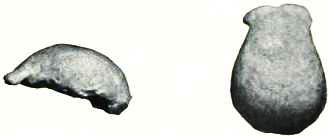Java Man (Homo erectus erectus) is the popular name given to early human fossils discovered on the island of Java (Indonesia) in 1891 and 1892. Led by Eugène Dubois, the excavation team uncovered a tooth, a skullcap, and a thighbone at Trinil on the banks of the Solo River in East Java. Arguing that the fossils represented the "missing link" between apes and humans, Dubois gave the species the scientific name Anthropopithecus erectus, then later renamed it Pithecanthropus erectus. The fossil aroused much controversy. Less than ten years after 1891, almost eighty books or articles had been published on Dubois's finds. Despite Dubois' argument, few accepted that Java Man was a transitional form between apes and humans. Some dismissed the fossils as apes and others as modern humans, whereas many scientists considered Java Man as a primitive side branch of evolution not related to modern humans at all. In the 1930s Dubois made the claim that Pithecanthropus was built like a "giant gibbon", a much misinterpreted attempt by Dubois to prove that it was the "missing link".
